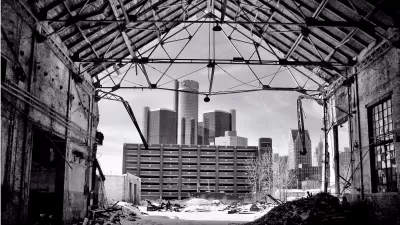For nearly all of my adult life, I have lived in small towns or urban neighborhoods. But for the past two years, I have lived in sprawl. When I moved to Jacksonville two years ago, I moved to Mandarin, a basically suburban neighborhood about nine miles from downtown. As I looked for apartments in 2006, I noticed that in many ways, Mandarin is typical sprawl: our major commercial street (San Jose Boulevard) is as many as eight lanes in some places, and even most apartments are separated from San Jose’s commerce. [See http://atlantaphotos.fotopic.net/c872477.html for my photos of Mandarin and other Jacksonville neighborhoods.] I thought Mandarin would be a typical suburb: homogenously white and upper-middle class.
For nearly all of my adult life, I have lived in small towns or urban neighborhoods. But for the past two years, I have lived in sprawl. When I moved to Jacksonville two years ago, I moved to Mandarin, a basically suburban neighborhood about nine miles from downtown. As I looked for apartments in 2006, I noticed that in many ways, Mandarin is typical sprawl: our major commercial street (San Jose Boulevard) is as many as eight lanes in some places, and even most apartments are separated from San Jose's commerce. [See http://atlantaphotos.fotopic.net/c872477.html for my photos of Mandarin and other Jacksonville neighborhoods.] I thought Mandarin would be a typical suburb: homogenously white and upper-middle class.
But in fact, Mandarin has the same kind of social mix as some of Jacksonville's more urban neighborhoods. Like many urban neighborhoods, Mandarin has rich and not-so-rich blocks: the rich live in Mandarin's western edge along the St. Johns River, the areas between the river and San Jose Boulevard (our major commercial street) are middle-to-upper-middle class, and the areas east of San Jose are more humble. And Mandarin has a few apartment complexes, which tend to be not so fancy: my own complex (the most expensive in the area, and the only one west of San Jose) is dominated by retirees, and others are dominated by working-class families of all races. Our retail is not just "big box" stores like Target and Wal-Mart: we have Brazilian, Russian and Asian supermarkets, as well as a variety of ethnic restaurants.
But Mandarin's diversity is not always a good thing: just as residents of walkable urban neighborhoods often don't go north of street X or east of street Y at night in order to avoid crime, Mandarin has a bona fide rough area - a street full of highly affordable apartment complexes where there have been at least two murders in the past two years. And I've been confronted by panhandlers twice in the last few weeks. I worry that Mandarin may be turning into one of Jacksonville's declining inner suburbs, a place forsaken both by urbanites who prefer more walkable neighborhoods and by suburbanites who prefer newer, safer suburbs.
So what have I learned from my years in Mandarin? That both the optimists and the pessimists about suburbia are right. Optimists correctly point out that suburbia is inheriting the diversity of cities- not just their ethnic and economic diversity, but their diversity of commercial forms: the notion that Wal-Mart is a natural monopoly is, in the setting of a large city, simply rubbish.
But pessimists are correct in worrying that as suburbs inherit urban diversity, they may inherit urban crime and decay.

Alabama: Trump Terminates Settlements for Black Communities Harmed By Raw Sewage
Trump deemed the landmark civil rights agreement “illegal DEI and environmental justice policy.”

Study: Maui’s Plan to Convert Vacation Rentals to Long-Term Housing Could Cause Nearly $1 Billion Economic Loss
The plan would reduce visitor accommodation by 25% resulting in 1,900 jobs lost.

Planetizen Federal Action Tracker
A weekly monitor of how Trump’s orders and actions are impacting planners and planning in America.

Wind Energy on the Rise Despite Federal Policy Reversal
The Trump administration is revoking federal support for renewable energy, but demand for new projects continues unabated.

Passengers Flock to Caltrain After Electrification
The new electric trains are running faster and more reliably, leading to strong ridership growth on the Bay Area rail system.

Texas Churches Rally Behind ‘Yes in God’s Back Yard’ Legislation
Religious leaders want the state to reduce zoning regulations to streamline leasing church-owned land to housing developers.
Urban Design for Planners 1: Software Tools
This six-course series explores essential urban design concepts using open source software and equips planners with the tools they need to participate fully in the urban design process.
Planning for Universal Design
Learn the tools for implementing Universal Design in planning regulations.
Caltrans
Smith Gee Studio
Institute for Housing and Urban Development Studies (IHS)
City of Grandview
Harvard GSD Executive Education
Toledo-Lucas County Plan Commissions
Salt Lake City
NYU Wagner Graduate School of Public Service





























